I am wide awake, looking through the window - The Whiteness. Myriads of snowflakes and no wind, it even feels warm. From time-to-time the pines are lazily shrugging the snow off their branches, all the sounds are muffled, and the silent white confetti is the main show of the nature today.
I am at hotel Yunishigawa, Yunishigawa Onsen village located within the boundaries of Nikko city, Tochigi Prefecture. The place is one of the many remote onsen areas scattered all around Japan. Historically, it is known as one the hideouts of the warriors of Heike samurai clan.
Heike (another name Taira) was one of the three samurai families which became prominent during Heian (794-1185) period of Japanese history. Fujiwara, Taira (Heike) and Minamoto (Genji) clans - all the descendants of imperial family- were constantly fighting each other for control of power and lands. To some extent those times can be compared with the situations in modern Syria and recent Afghanistan. With Fujiwara clan, at the beginning the most influential, weakened by the end of the 12th century, it was then down to the rivalry between Taira and Minamoto which culminated in Genpei War (1180-1185) resulting in the downfall of Heike.
As a result, the members of the Heike clan spread all around Japan looking for hideouts. Yunishigawa area became one such place. Interestingly, another hot spring area I visited recently, Shiobara Onsen, also was a place where Heike exiles (they were called “ochiudo” 落人 - defeated soldiers) found a refuge. Living wild definitely affected what type of food Heike people were eating. Deer and bear meat, fish from the river, forest plants, mushrooms, buckwheat rice (I prefer it to the white) and herbs were the staples.
This cuisine is now widely marketed as a “unique and healthy” Heike food with modern restaurants and cafes in the area chanting the appeal through their menus.
Here is yakiniku (grilled meat) shop in Yunishigawa specialising in deer meat again.
The legend goes that chicken were forbidden as many Heike people were killed by Genji clan after their whereabouts were found through the noise of the chicken. As a nod to the tradition, I did not see many, if at all, chicken dishes in a few local eateries.
Naturally, Yunishigawa belongs among the so called “Kakurezato” - hidden villages of Japan which before could be reached only by foot. Another “kakurezato” areas of Nikko are Kawamata and Okukinu. If we go into hiding mode further, there are truly hidden hot springs at Okukinu which can be reached only by foot even these days. But here I will stop short as I want them to stay hidden as they are.
I travelled to Yunishigawa by train from Nikko (where I was skiing) alighting at Yunishigawa Onsen station.
There is also a public spa inside the station building.
Another way to travel is one hour bus from Kinugawa Onsen station which is a nice trip also passing a few river dams.
The station is next to a huge dam called Ikari occupying the territory equal to the half of Chicago.
In fact, the whole area is full of dams within the walking distance from each other.
Bus trip to my hotel lasted around 30 minutes passing through many tunnels surrounded by the mountains with a thick forest which brought me to a conclusion that the area is probably not a walker’s paradise.
Hotel Yunishigawa I booked is 30 minutes’ walk from the village center and belongs to the chain of Itoen Hotels.
The chain is popular among the retires providing cost effective accommodation including two meals at the reasonable price. Daily rate I paid (weekday) was 9,000 JPY including buffet breakfast, dinner and a free access to a beer dispenser (you pour yourself as many Asahi schooners as you want) or bottles of sake. Food is not super, and the menu does not change, so it may get boring if you stay two nights or more. In any case, you don’t have many other options as a few restaurants in town operate on irregular basis and close early.
As a side note, I have been noticing that compared, say, 20 years ago, the buffet menus in such “retiree havens” include more and more Western dish- intruders. Greasy potato chips, sausages, fondue, rich cakes, not to mention the waterfalls of Cola, Fanta and other colored sugar drinks. And I see more elderly munching on these “intruders” whereas before it was more around grilled fish, tofu, occasional steak, natto and pickles. Adding irresistible for many free access to alcohol, this is definitely not a recipe to longevity. To be fair, fresh salad leaves were served during each buffet session.
Hotel features mildly alcaline outdoor bath rich in calcium ions (as the table at the entrance says).
The water was not too hot (compared, say, to hot springs in Aomori Prefecture), so sometimes I stayed up to 30 minutes enjoying the snow falling on my face.
As I mentioned, the center of the village can be reached by foot within 20-30 minutes. This is a pleasant walk although on some sections shared with cars which are only a few.
Wow, this sign tells me there is also Oku-Yunishigawa onsen, that is Inner Yunishigawa. Only 3 km away, so I will walk there as well!
Another 15 minutes and I reach the center of the village. Couple of cafes/restaurants, one grocery also functioning as a café, post office, and a few hotels.
Here you can have udon with mushrooms.
Central area looks more attractive in the evening, but I hardly saw any people even it was during Kamakura lantern festival (later on this).
In the center of the village there is an old ryokan called Honke Bankyu. The sign says that it has been run by one of the Heike families for 25 generations. I am not sure if I will visit Yunishigawa again, but I will try to stay here one night should it happens.
Actually, I passed the same ryokan again in the evening, and it was nicely illuminated.
There is a small bridge near ryokan leading to a group of old buildings one of them is Seisuiya ryokan established 800 years ago.
From the bridge I see that the bottom of Yunishigawa river is rocky. I wonder again how it is here in the summer and if there are any walking trails.
My next destination is Heike-no Sato, a part of historic village turned open air museum. Here you can see ancient Heike hatched houses with some attributes of their daily life.
Inside one of the houses.
I definitely like those boots.
Some huts resembling igloo.
I then cross another bridge and climb towards Oku-Yunishigawa area. Strong wind is hitting my face with myriads of snowflakes, but it is not far.
Another ryokan here.
I turn back towards Yunishigawa village as the snowfall increased. Passing a few abandoned houses and probably former izakaya. I am curious and checking when the beer was produced. The labels show manufacturing date of 2019. I guess the nicotine dispenser is much older. I wonder if the model-guy enjoying his Cabin cigarette is still alive.
Near the village I walk towards Tenrakudo suspension bridge covered with a thick snow.
Good view of the river and Yunishigawa settlement from the bridge.
I happened to be in Yunishigawa during the so called Kamakura festival, as I mentioned earlier. Before the event hundreds of illuminated small snow houses (kamakura) are built along the river and inside the village (this year the festival will run until March 2). In the evening the local hotels provided regular shuttles to the main spots to enjoy the views. I visited one area near the bridge. It was spectacular.
But most of all I enjoyed a slow walk back to the hotel with snow energetically squeaking under my boots while accompanied by the lights of the village.
Why are the streets empty? Actually, I saw dozens of people admiring the lanterns across different sites but then realized that all of them returned to their hotels by shuttle buses. So, if I was a mayor I would set up a stage, a few tents with heaters selling snacks and drinks, volunteer performance, in short creating more event-like atmosphere and bringing more revenue into the town. But at 6.30 pm the town was dead, although beautifully illuminated. With more days until the end of the festival I hope they will have had more activities.
I am planning to explore the nearby areas of Tochigi more, as on the return bus I spotted nice walks along Kinugawa River. Will start somewhere near Ikari Dam, then going south towards Kinugawa Park and further time and tracks permitting.
If you know any “not famous” walks in Tochigi prefecture, please let me know in comments.



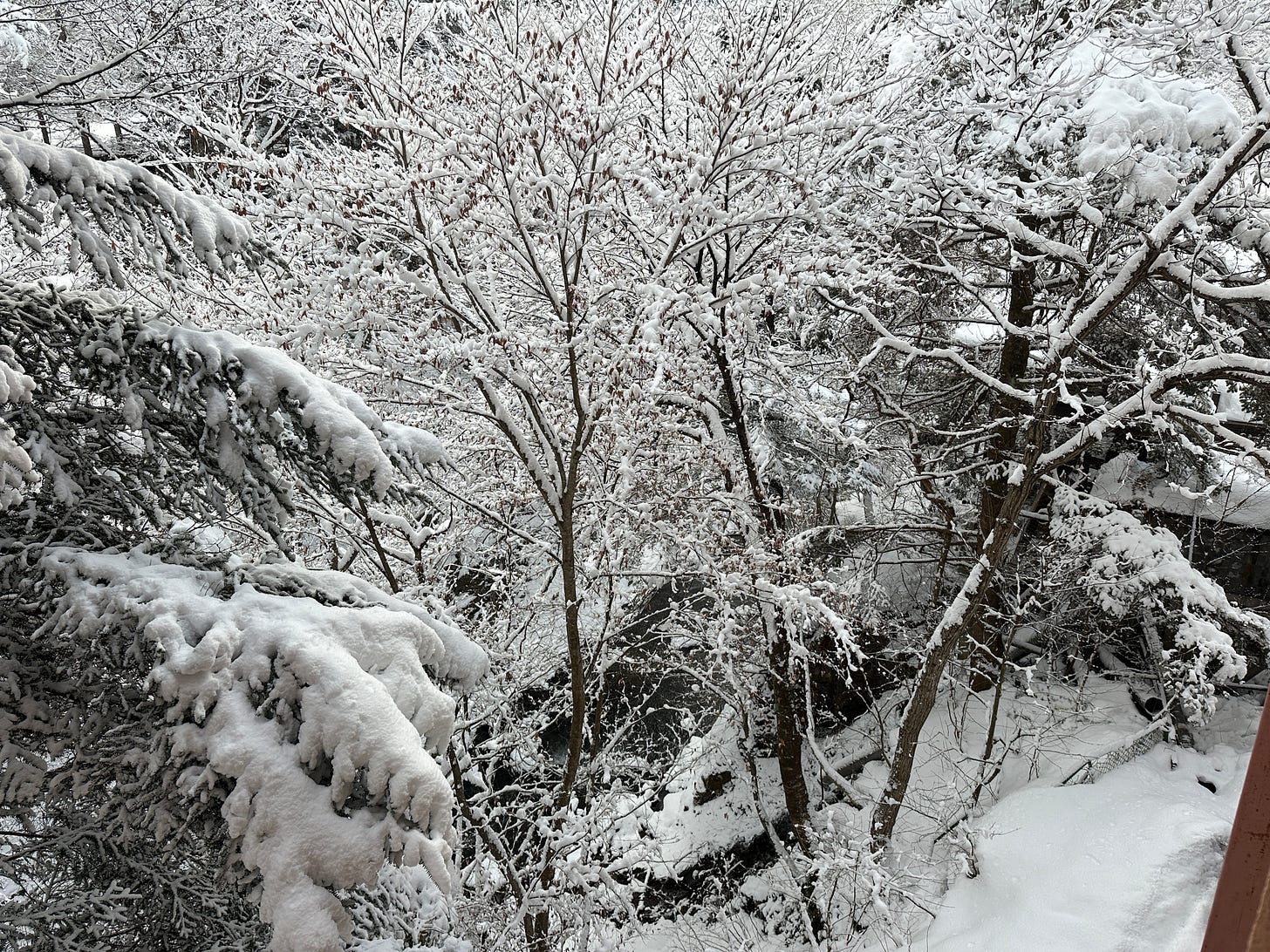

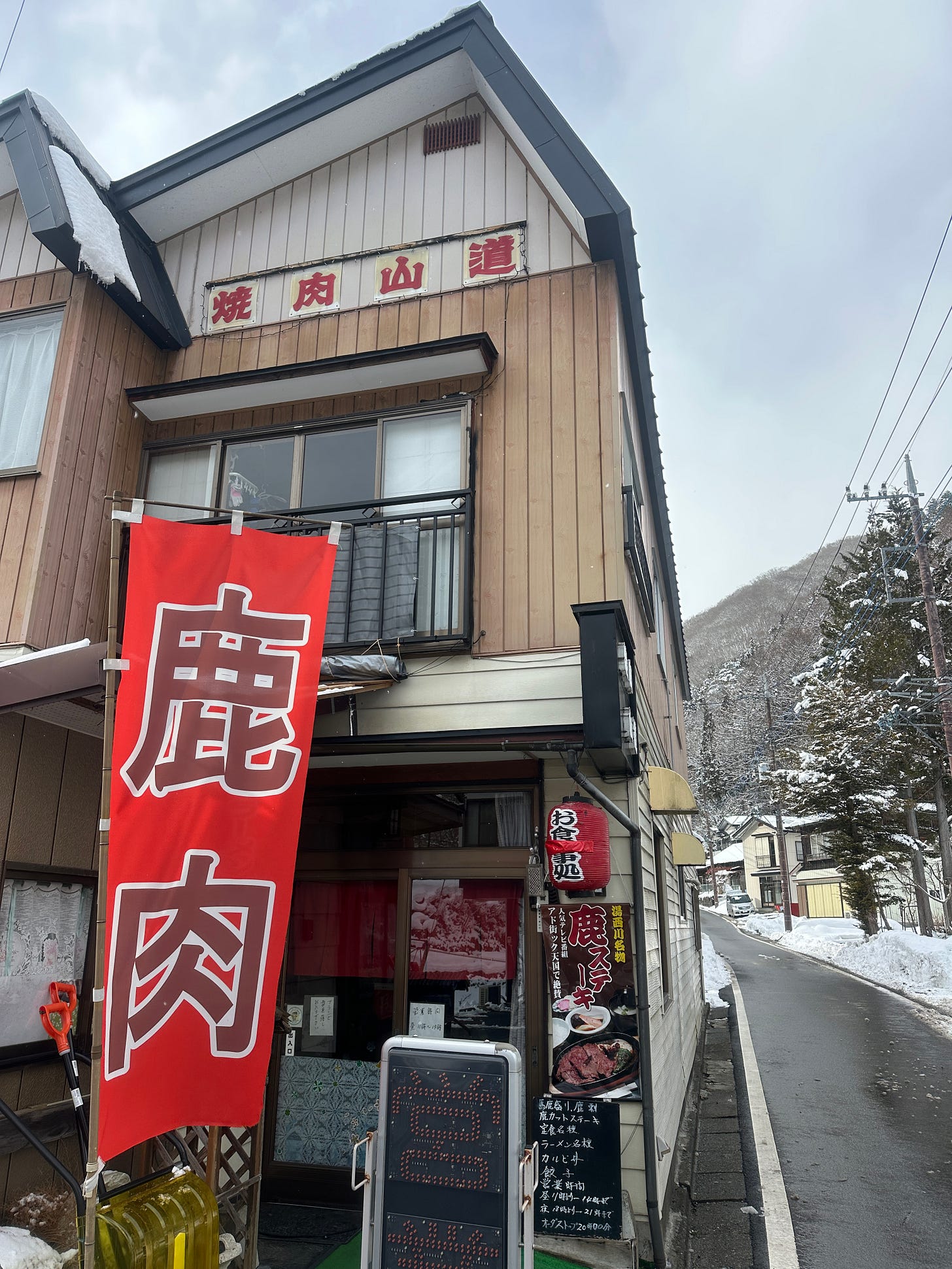
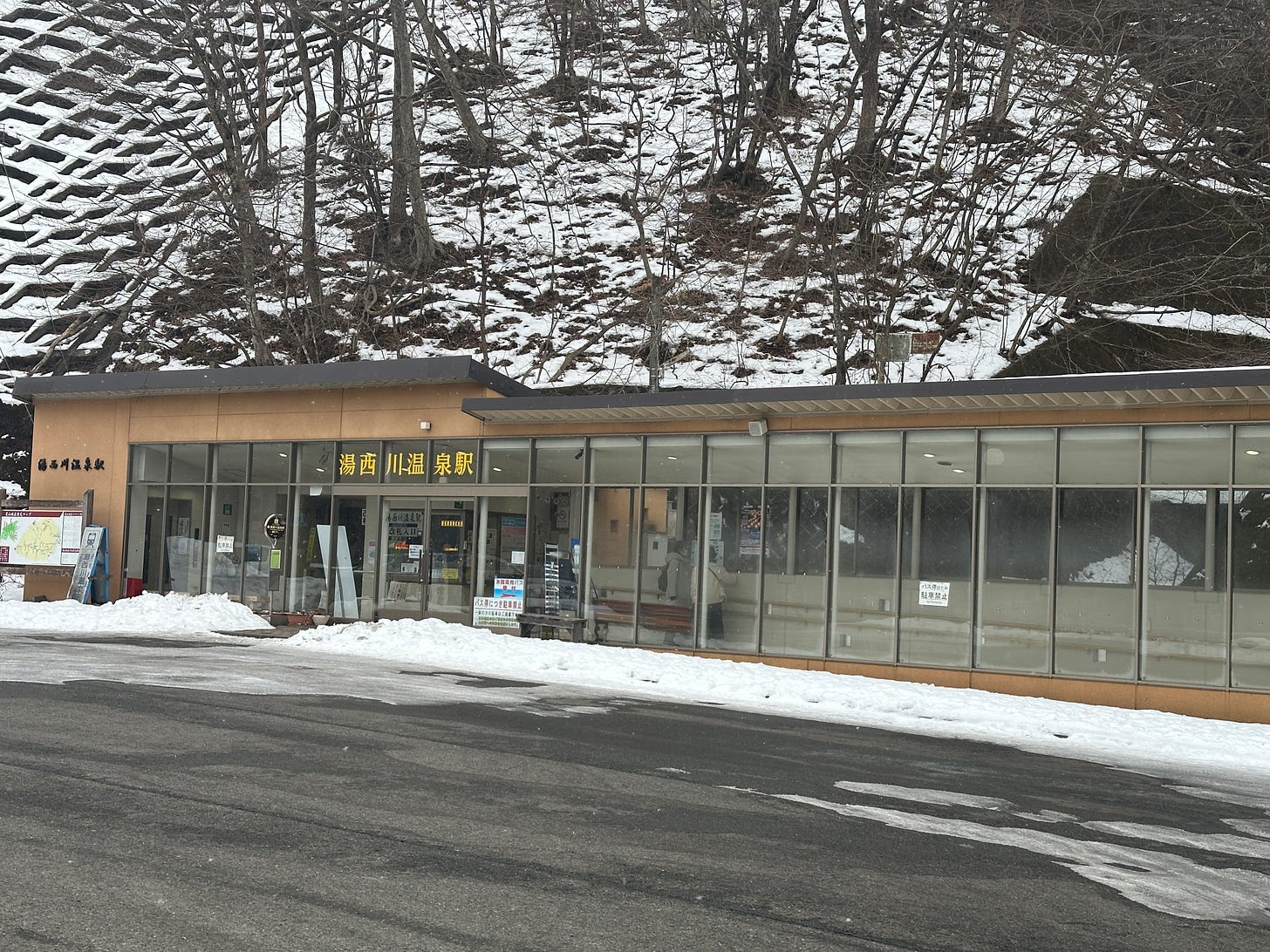
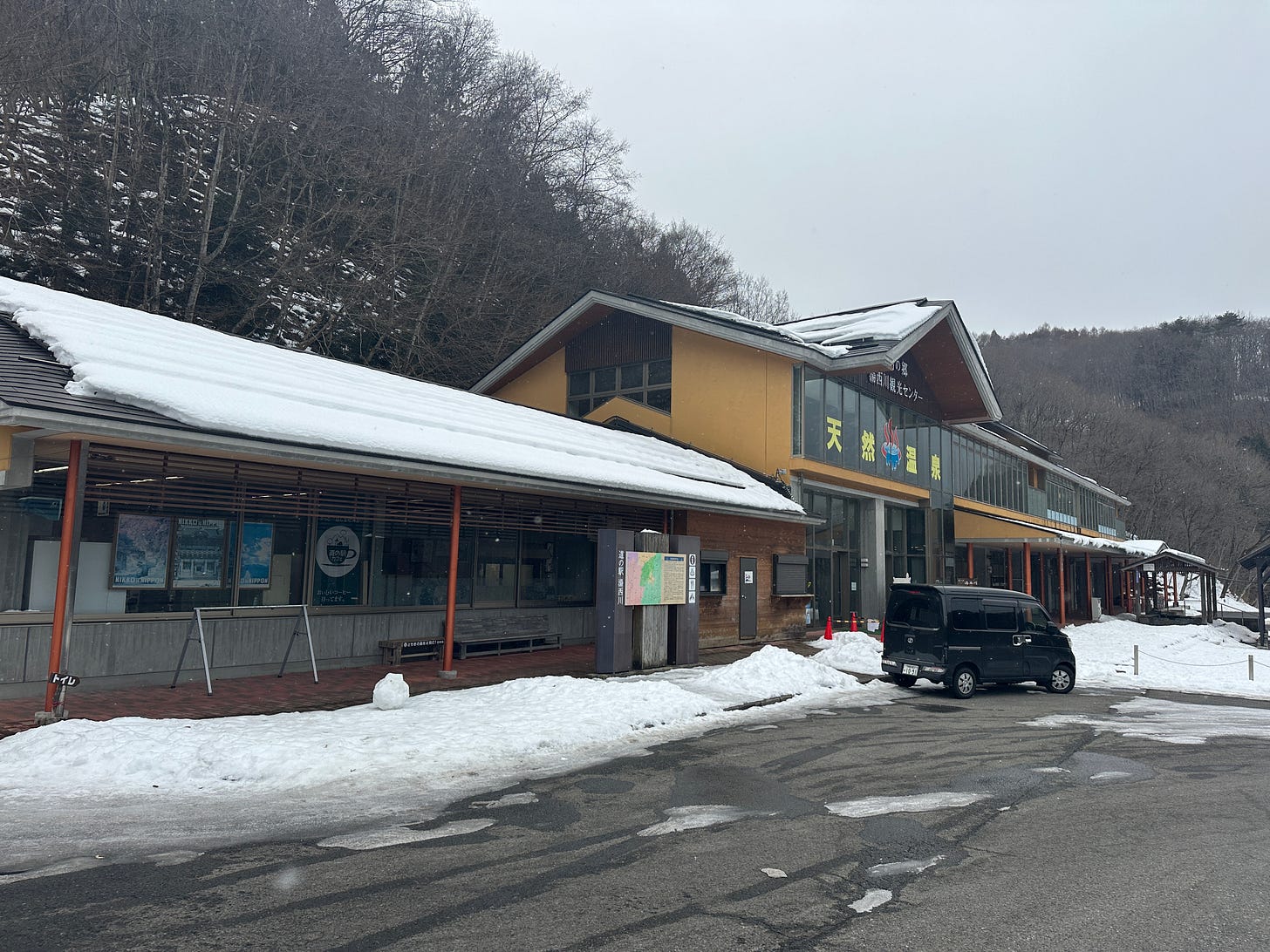


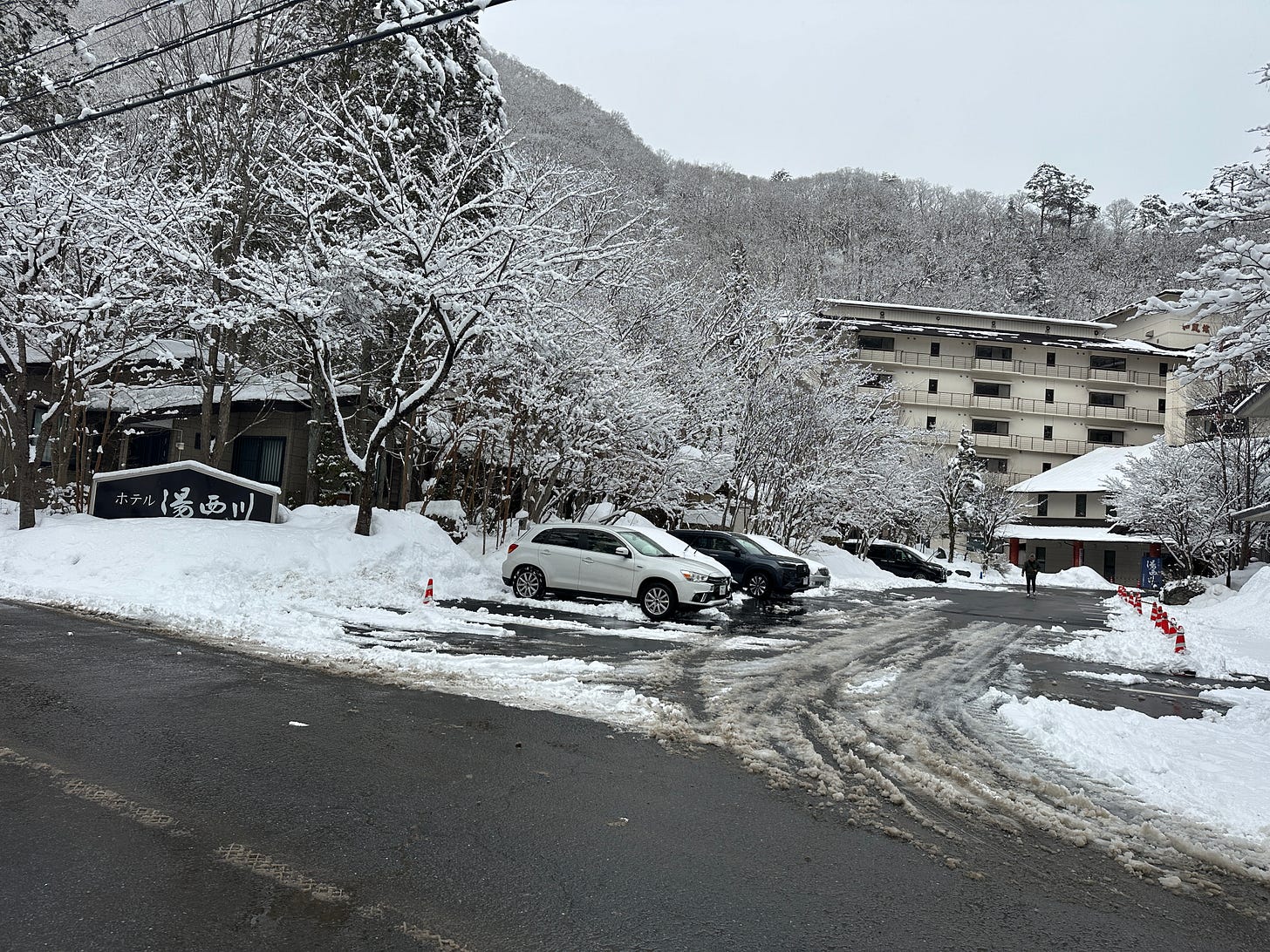
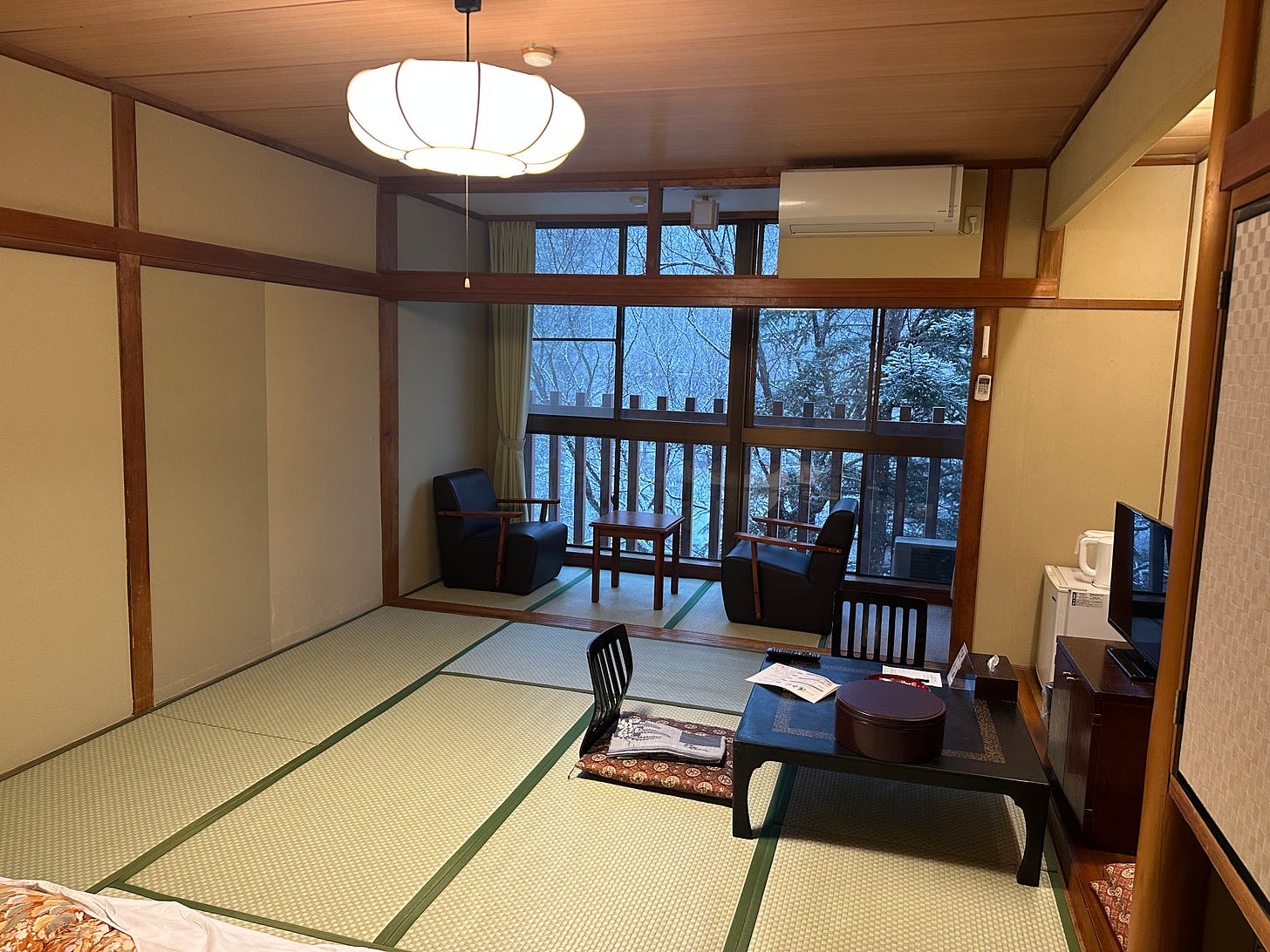

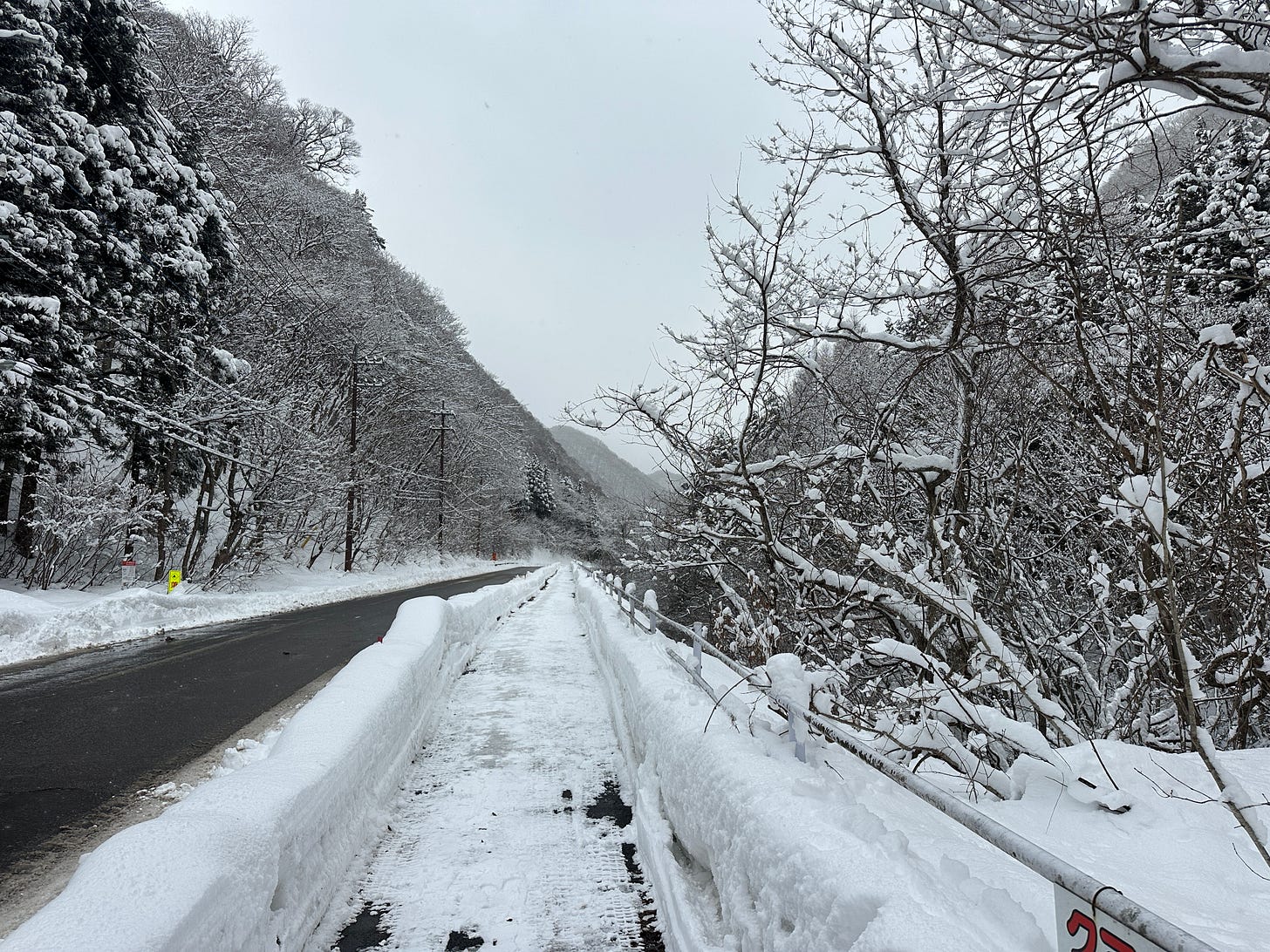

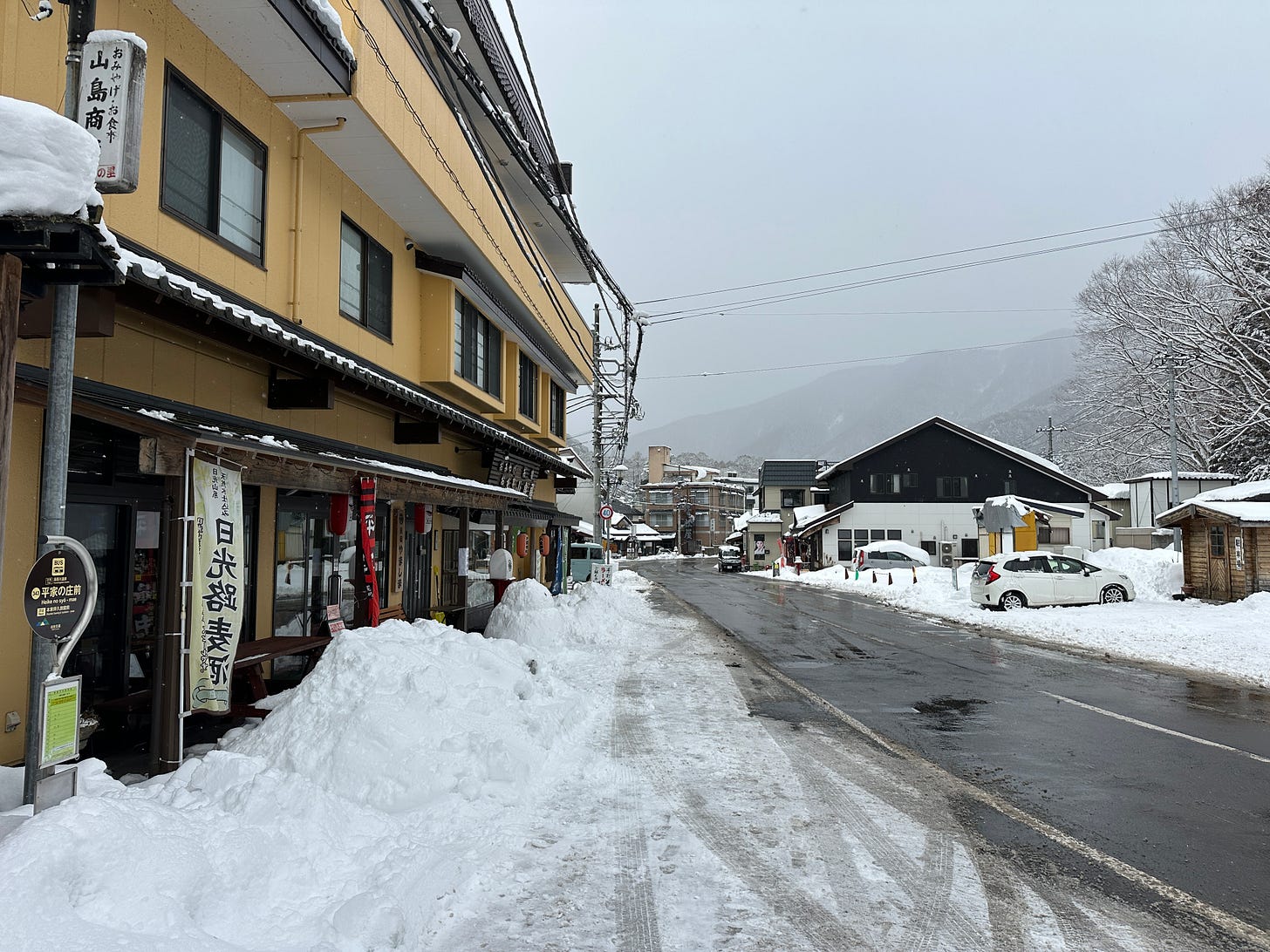



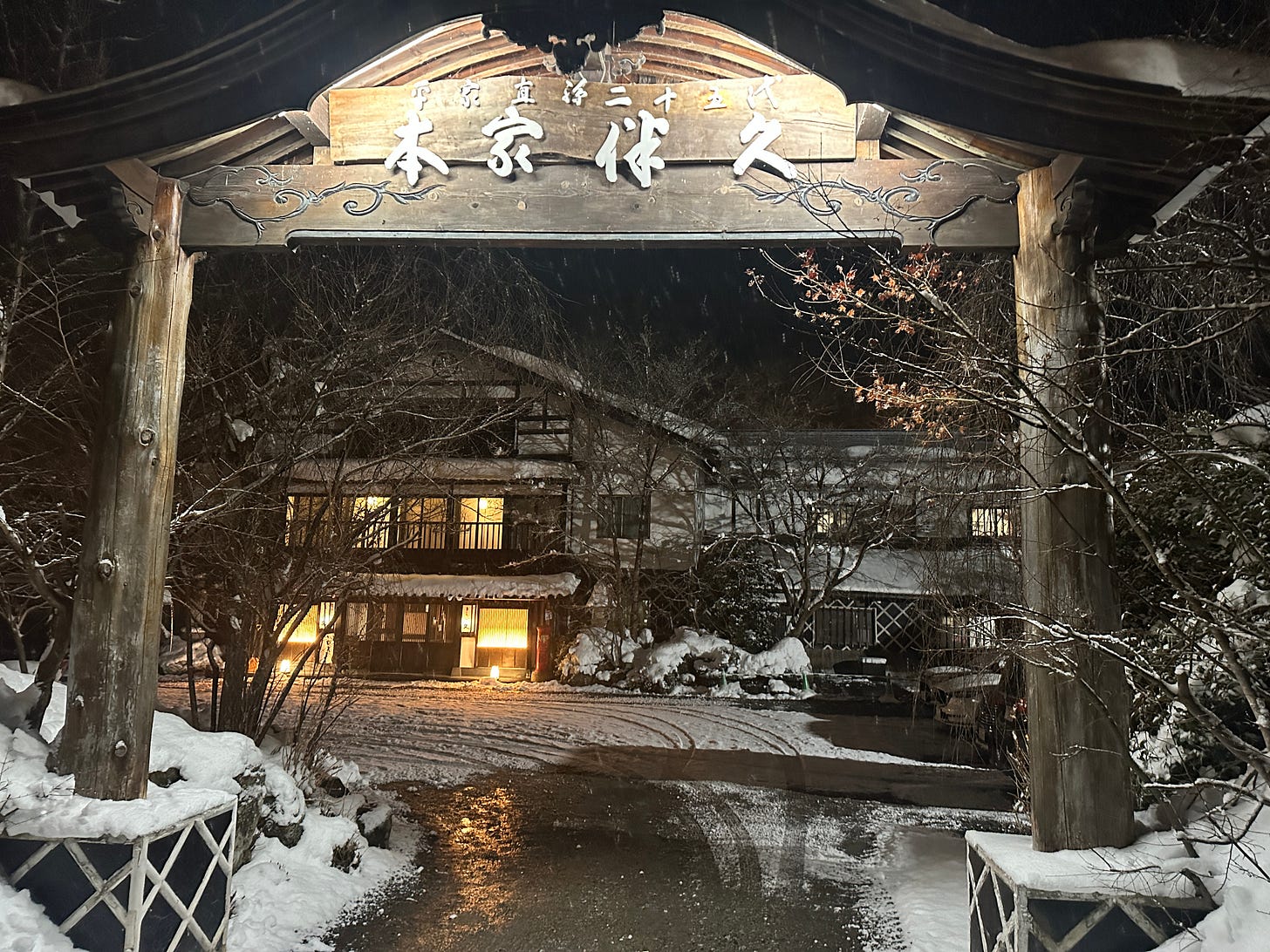
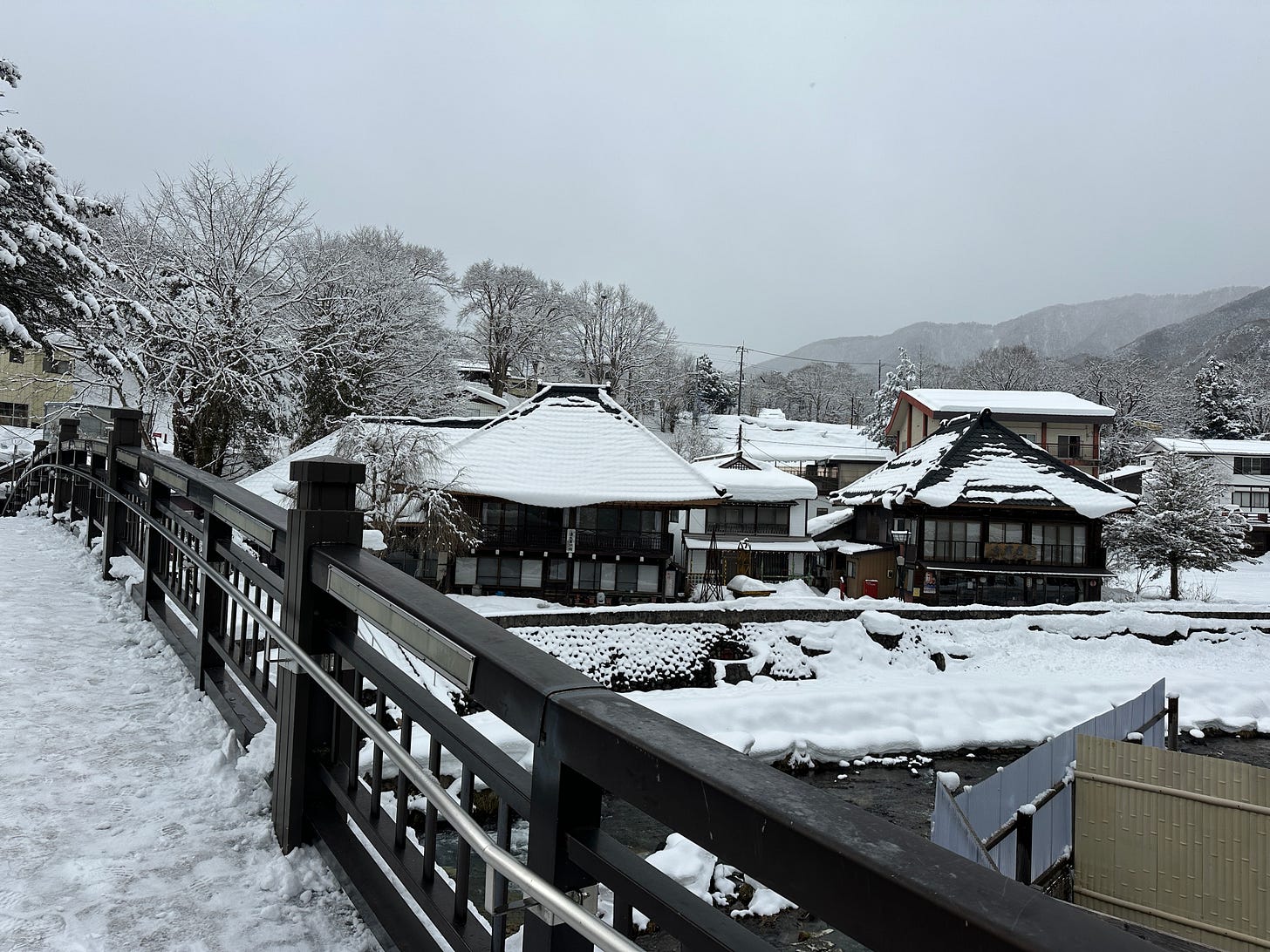

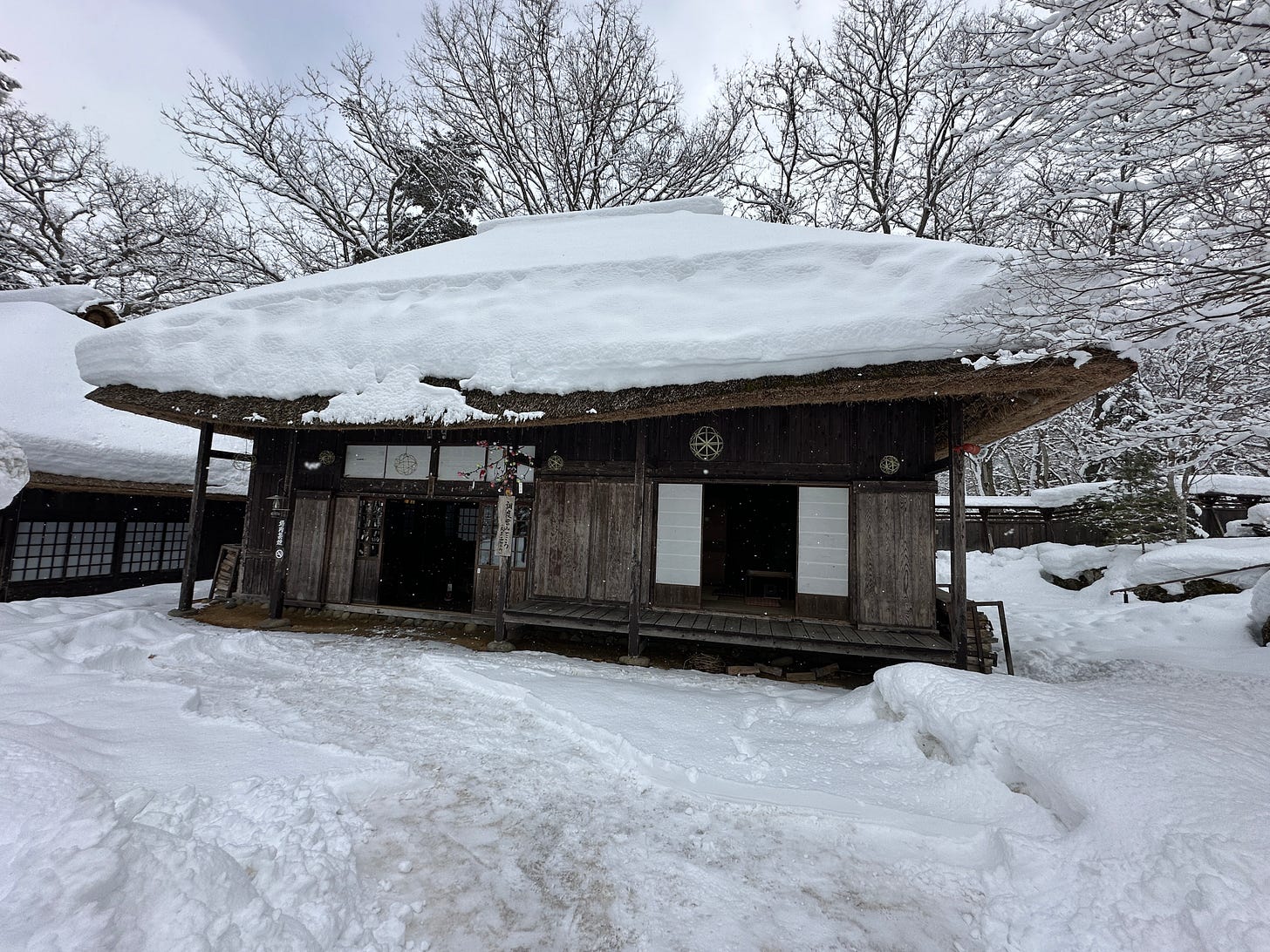
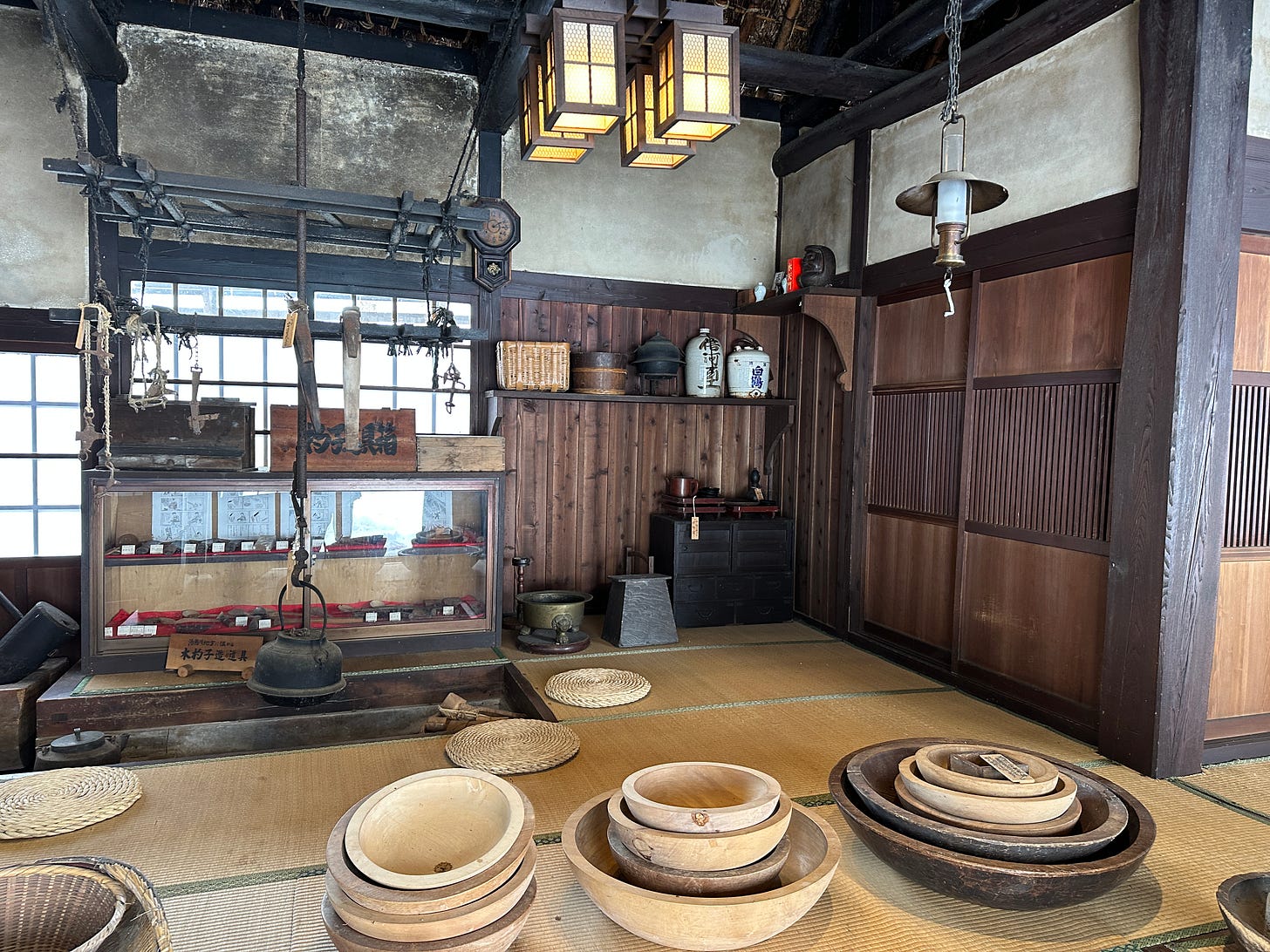
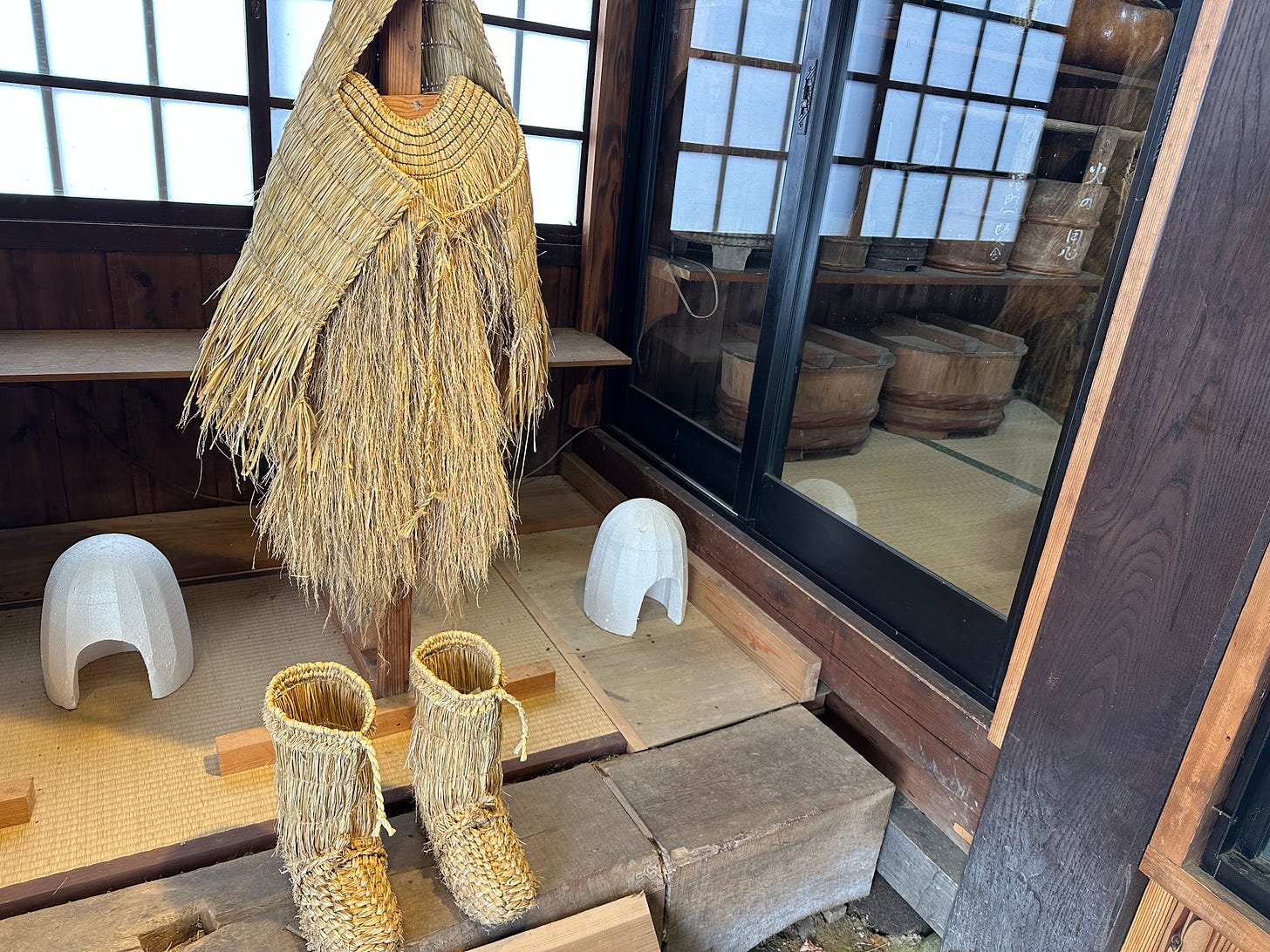
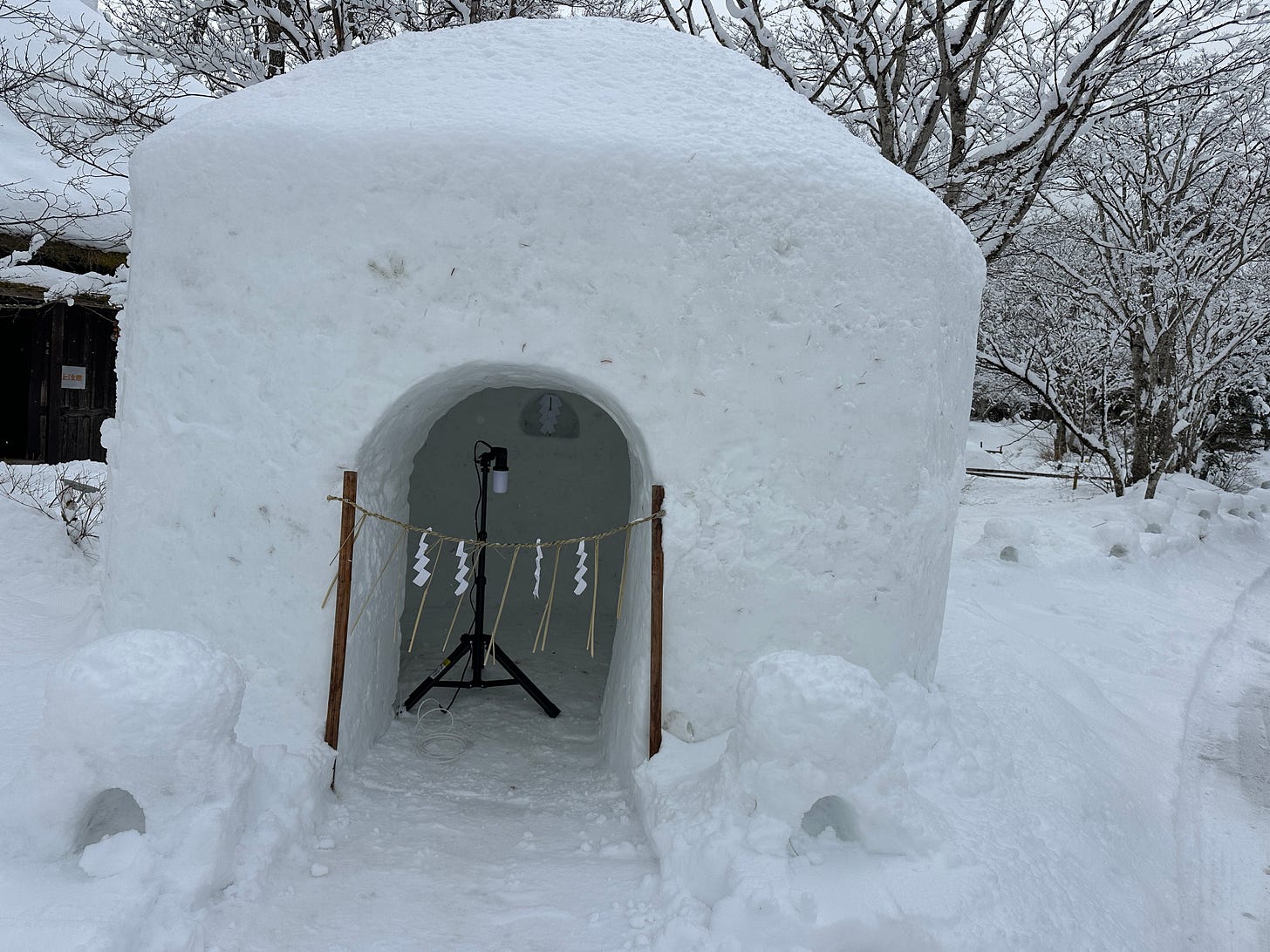






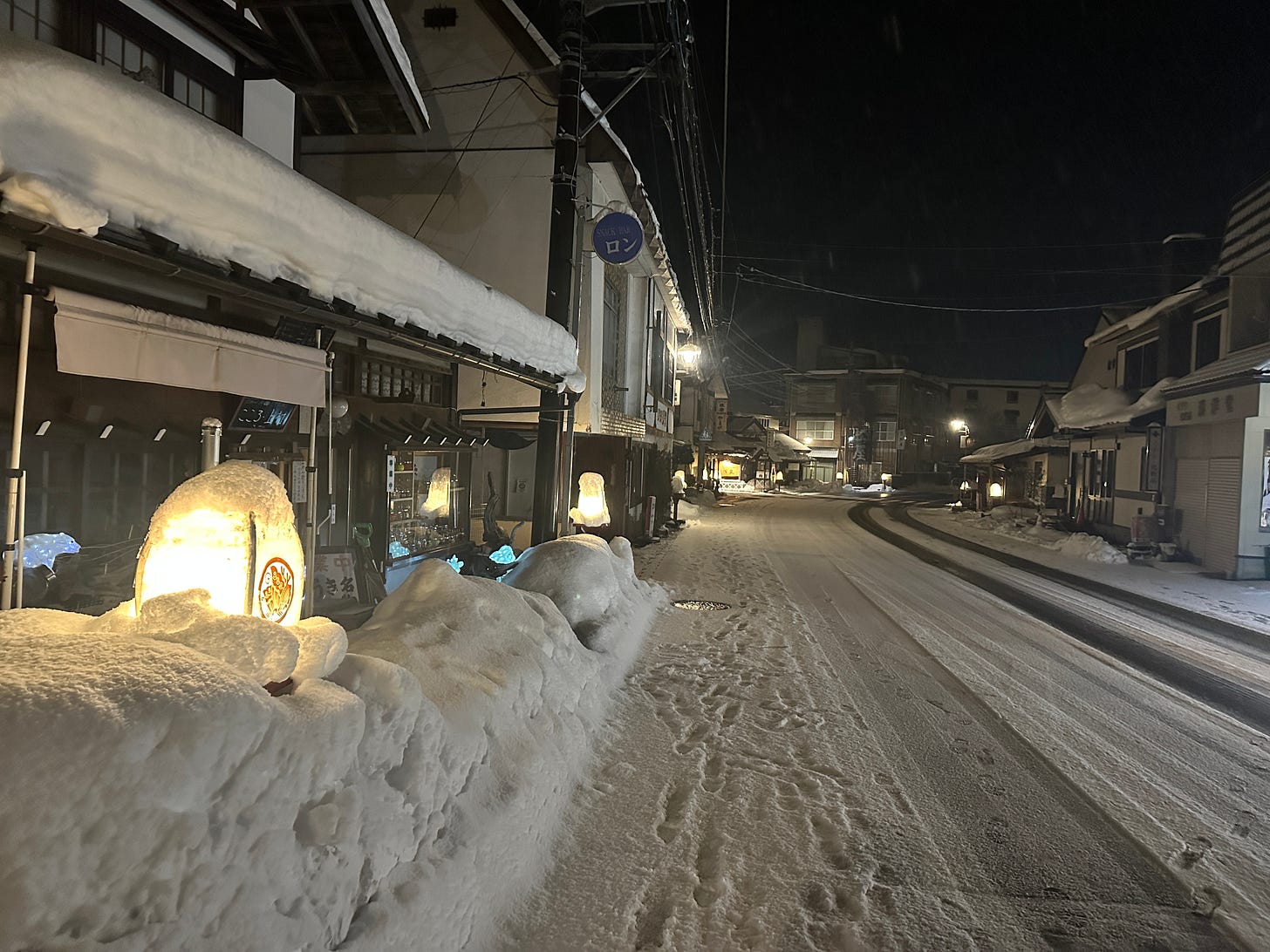

Wow hidden treasure indeed if one doesn't mind the cold. Hope there are nice trails around and look forward to reading the summer edition of this place.
Wow, cannot thank you enough for sharing your one-of-a-kind walking escapades to non-touristy locations in Japan.